When you spend the vast majority of your spare time working on open-source software like Pitivi, sometimes you feel like hacking on hardware made of dead trees for a change. Dead trees have very few bugs unless you let them sit on the ground for extended amounts of time.
As I was quite unsatisfied with all the various keyboards I’ve had over the years (including the RSI-inducing Apple keyboards and the Lenovo external Thinkpad keyboard which, unfortunately, has a terrible build quality and not the same feeling as the real Thinkpad keyboard), I recently obtained a Unicomp buckling spring keyboard — the true successor of the legendary IBM Model M.
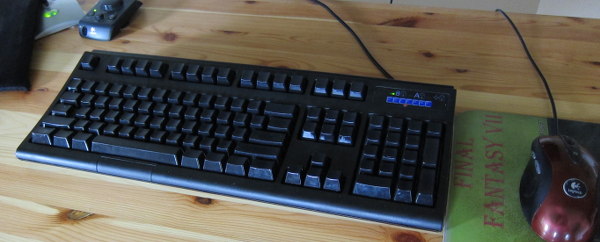
The only downside is that if you’re working with ninjas, you’re supposed to be stealthy. Typing at 115 words per minute with the loudest keyboard on Earth will instantly reveal your position. My brothers in arms have already warned me: they might lock me up in the bathroom if I blow up their cover. Nobody wants that.
At some point, I had the idea of putting the keyboard in a tray below the desk, and this dampened the sound quite a bit. Adding a piece of cloth on top of it muffled the sound even more, to the point where it was not any louder than a switch keyboard or some rubberdome keyboards. However, I find keyboard trays annoying: the tray moves around, you keep bumping into it with your legs, your hands and arms are lower (which may be a problem in terms of ergonomics), the cables get in your way, etc. I rolled with that for a while, but felt that something was missing.
Surprisingly, searches across the Internet seemed to indicate that nobody designed a solution for muffling the sound of buckling spring keyboards. Then the idea struck me: just build a cage with sound-absorbing materials inside.
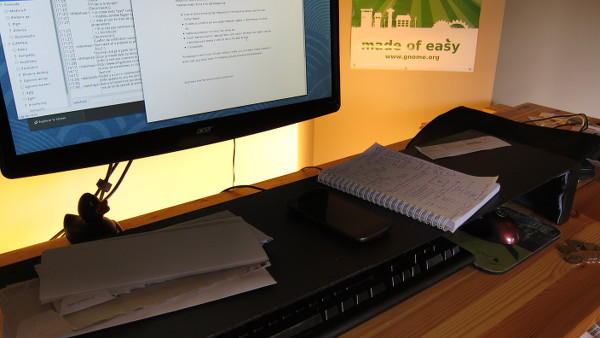
Some of its advantages are:
- Cuts off most of the annoying high frequencies of the buckling springs.
- Doubles as a shelf to put your papers, mobile devices, shuriken, etc.
- Additional protection from dust, hair, snow, etc.
- Stealth elements built-in: reduced radar cross section (the keys are hidden!) and the matte black paint blends in with the rest of the desk at work.
- Transportable. Well, it’s lighter than the keyboard at least.
The best part is that it costs virtually nothing to make: you just need a couple of pieces of wood, nails and a hammer, glue, a staple gun, four hands and a towel. The following pictures should be self-explanatory.
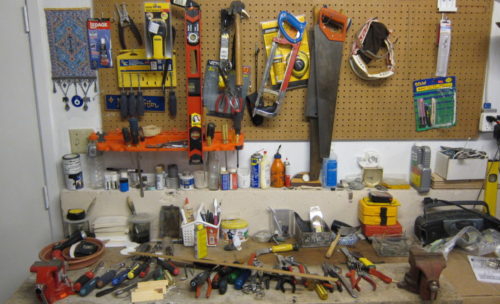
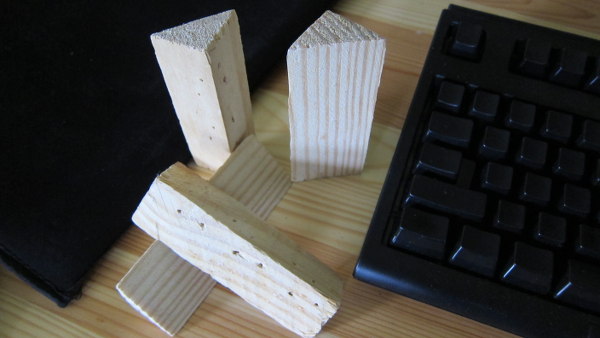
The triangular blocks came from disassembling fruit crates. You can forego them entirely if you make your “walls” out of solid wood.
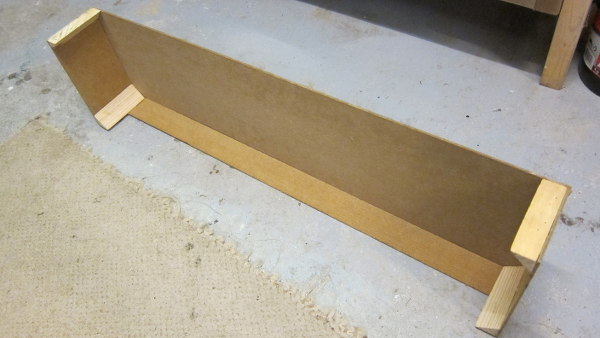
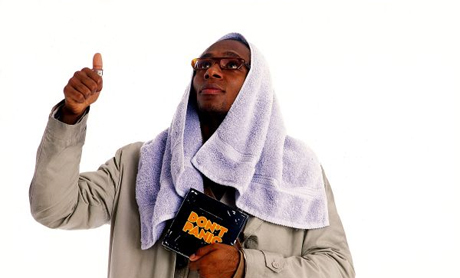
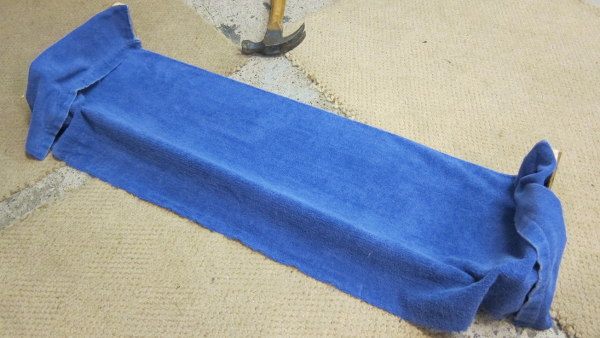
Use a tack gun (or nails) to secure the towel in place, then use paint for camouflage.

This is how the beast sounds and looks like in its natural habitat (the camera’s microphone doesn’t quite do it justice though):
In theory, using eggcrate foam would surely provide better soundproofing than the towel; however the current setup is sufficient to allow me to type guilt-free, so that’s good enough.
Comments
One response to “DIY sound suppressor for the Unicomp / model M keyboard”
“Surprisingly, searches across the Internet seemed to indicate that nobody designed a solution for muffling the sound of buckling spring keyboards.”
Hum, I’m not sure your search-fu is adequate! IBM actually made one themselves. You can even buy one, right now, for the low low price of $270:
http://www.clickykeyboards.com/index.cfm/fa/items.main/parentcat/13192/subcatid/0/id/573991
The key phrase is “soft touch” – the “soft touch” Model M’s had grease injected into the buckling spring mechanisms to reduce noise.
Googling:
“soft touch” site:geekhack.org
will find some discussion of it on that site, which is basically the only place you need to go for any kind of crazy keyboard geek discussion. I’d be amazed if poking around there didn’t reveal some other experiments in Model M sound reduction.
Personally I eventually switched to a Cherry MX brown board, which I find is still nice to type on but a lot quieter. I discussed some other options at http://www.happyassassin.net/2013/02/22/more-tech-toys-keyboards-this-time/